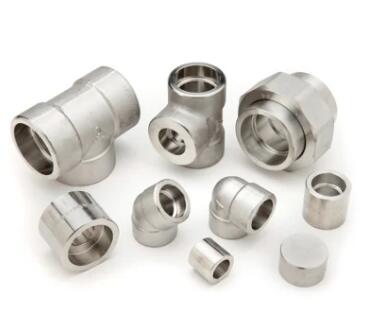What are the main types of pipe fittings
2023-11-03
Pipe fittings are essential components used to connect, control, or change the direction of pipes in plumbing, heating, and various other piping systems. There are several main types of pipe fittings, each serving a specific purpose in ensuring the proper functioning of a piping system. Here are some of the main types of pipe fittings:
1. Elbow Fittings: Elbows are used to change the direction of the pipe by 90 degrees or 45 degrees. They come in various angles, including 90-degree elbows and 45-degree elbows, and they are essential for routing pipes around obstacles and corners.
2. Tee Fittings: Tee fittings have a T-shaped design and are used to create branch connections in a pipe system. They allow flow in one direction and branch out in two others. Cross fittings are similar to tee fittings but have four openings.
3. Reducer Fittings: Reducer fittings are used to connect pipes of different sizes. They come in two types: concentric reducers, which maintain a straight centerline, and eccentric reducers, which have one side offset from the centerline.
4. Coupling Fittings: Couplings are used to connect two pipes of the same size in a straight line. They are often threaded, allowing for easy installation and removal.
5. Union Fittings: Unions are similar to couplings but are designed for pipes that require periodic disconnection for maintenance or repair. They consist of three pieces: two threaded ends and a central nut for easy assembly and disassembly.
6. Flange Fittings: Flanges are flat, disc-like fittings with a raised rim and holes for bolts. They are used to connect pipes, valves, or other equipment, and they provide a secure and leak-free connection. Flanges are often found in high-pressure and high-temperature applications.
7. Cap Fittings: Cap fittings are used to close the end of a pipe, effectively sealing it. They are especially useful for terminating or capping off pipelines.
8. Plug Fittings: Plug fittings are similar to cap fittings but have a threaded or unthreaded design. They are used to close the ends of pipes, valves, or other equipment and can be easily removed when necessary.
9. Cross Fittings: Cross fittings are used to create branch connections in a pipe system, similar to tee fittings, but they have four openings that allow for branching in multiple directions.
10. Nipple Fittings: Nipples are short lengths of pipe with male threading on both ends. They are often used to extend a pipe or connect two fittings together.
The choice of pipe fitting depends on the specific requirements of the piping system, such as the type of fluid being transported, the size and material of the pipes, and the design of the system. Proper selection and installation of pipe fittings are essential for ensuring the integrity and functionality of the entire piping system.



